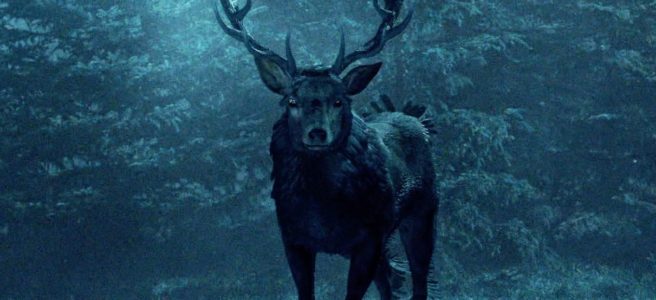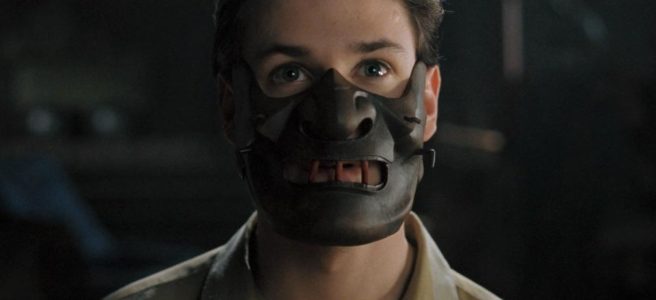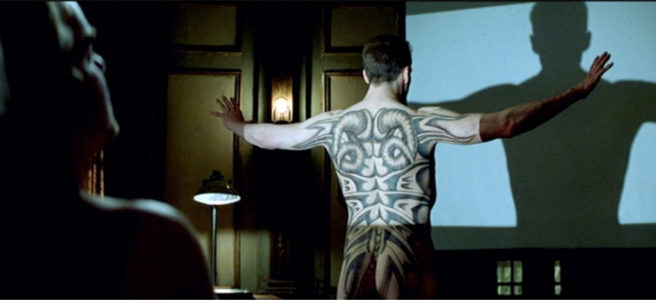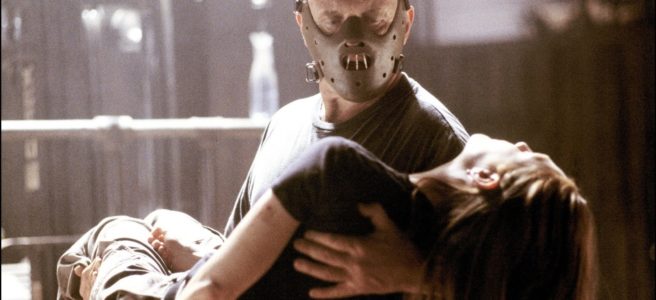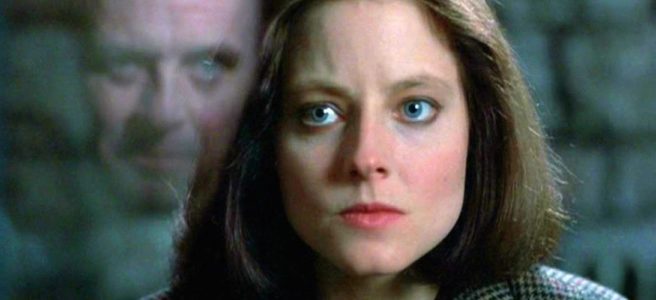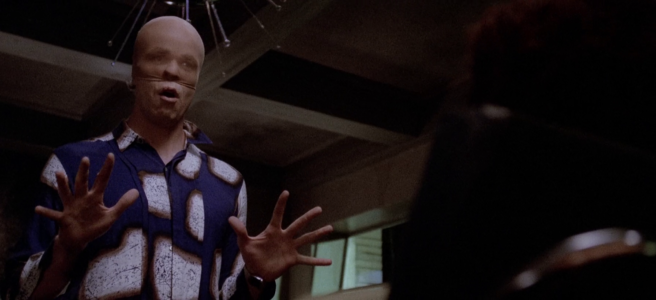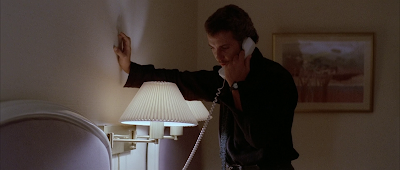Welcome back to a very special bonus entry in the Hannibal Lecter retrospective! In today’s post we’re going to be looking at the three seasons of the the TV series Hannibal! I set a precedent way back with The Planet of the Apes franchise that TV series weren’t on the table when I do retrospectives since they add a ton of extra work hours on top of having to watch, research and review however many movies are in that franchise already and, like I’ve said, I don’t get paid for this so I don’t really feel the need to go to that extra effort. However, binging Hannibal on Netflix was the catalyst that led to me doing this retrospective series in the first place, so it felt appropriate to cover it this time.
Also, for simplicity’s sake, I’ll refer to the TV series simply as Hannibal in this article. For the novel or the Ridley Scott film of the same name that we’ve already covered in this retrospective series, I will refer to those as “the novel Hannibal” and Hannibal (2001) respectively as needed.
PRODUCTION
After Hannibal Rising‘s poor showing at the box office, it was obvious that interest in the character had waned and the franchise went into dormancy. On November 10, 2010, long-time rights-holder of the Hannibal Lecter character Dino de Laurentiis died and the rights passed to his estate and wife, Martha. Meanwhile, Universal had a stake in the character as well, while MGM still retained the rights to the characters in The Silence of the Lambs (specifically Clarice Starling and Buffalo Bill). With de Laurentiis’ death, it seems like the franchise began to make some new moves. Katie O’Connell began developing a Hannibal Lecter TV series at NBC (a television subsidiary of the same corporation that owns Universal) in 2011. Bryan Fuller, who was coming off of creating the critically acclaimed series Pushing Daisies was asked to helm the show and produce a pilot script. However, the script was so good that the show was financed and put into full production of a 13-episode season without requiring a pilot episode. Fuller based the series around the relationship between Hannibal Lecter and Will Graham, while he planned to spend the first two or three seasons on the backstory prior to the novels, before moving into the ground covered by the novels and then ending after one more original season.
Perhaps sensing the excitement growing for Fuller’s take on Hannibal Lecter, only a couple months after Hannibal went into production, Lifetime announced that they were going to produce their own series revolving around Clarice Starling (MGM was producing this series). However, the show never entered full production and was shelved. Fuller had hoped to secure the rights to The Silence of the Lambs characters if they ever reached that point in the show, so it’s probably for the best that it didn’t move forward.
Hugh Dancy was the first actor cast, playing Will Graham. Mads Mikkelsen (probably best known at the time as Le Chiffre in Casino Royale) was cast next as Hannibal Lecter. Rounding out the main cast was Laurence Fishburne as Jack Crawford. Fishburne was just coming off of a tenure on CSI, where he had replaced Manhunter-lead William Petersen’s character. Several other supporting characters were cast thereafter, including Caroline Dhavernas as Alana Bloom, Hettienne Park as Beverly Katz, Lara Jean Chorostecki as Freddie Lounds, Kacey Rohl as Abigail Hobbs, Raúl Esparza as Frederick Chilton and Gillian Anderson as Bedelia Du Maurier, Hannibal’s therapist. Anderson, you may remember, was one of the actresses on the shortlist to play the recast Clarice Starling in Hannibal (2001), so it was exciting to finally see her get a role in this franchise.
The first season was critically acclaimed and was nominated for several awards, winning (among others) Best Network Television Series and Best Actor on Television at the Saturn Awards in 2014. However, it didn’t do very well in its viewer ratings, likely due to the fact that NBC kept putting it in terrible time slots that kept it from growing an audience. After some apprehension, especially given the show’s considerable budget, NBC reviewed the series for another 13-episode season. For the second season, the supporting cast was expanded by the likes of Cynthia Nixon (of Sex and the City fame) as Kade Prurnell, Katharine Isabelle (the lovely Canadian scream queen of Ginger Snaps fame) as Margot Verger and Michael Pitt as Mason Verger. In addition, Fuller tried to secure freaking David Bowie to play Hannibal’s uncle Robert, but Bowie was unavailable and so the part was scrapped from the story. Unfortunately, similar viewer ratings-issues plagued the second season of Hannibal – the poor ratings and gore meant that they wouldn’t give it a prime time slot, but the time slot that they put it into guaranteed that it wouldn’t foster a wide enough audience. Furthermore, the fact that it was a network TV show ran counter to the series’ insanely violent content and some even speculated that the show would fare better on a cable network where such extreme content was expected. That said, the show’s critical reception was even greater than it had been previously and the show was nominated for even more awards, once again winning Best Network Television Series and Best Actor on Television at the Saturn Awards in 2015, as well as winning Best Supporting Actor on Television this time. This might be why NBC once again renewed the series for a third season.
For the third season of the show, Bryan Fuller dived right into adapting and remixing the books for television. The first half of the season adapts the novel Hannibal, while also mixing in elements from Hannibal Rising. The second half then adapts the events of Red Dragon. Michael Pitt suddenly decided to leave the cast and was replaced by Joe Anderson. Several new supporting cast members were added, including Fortunato Cerlino as Rinaldo Pazzi, Tao Okamoto as Chiyoh (a handmaid of Lady Murasaki), Richard Armatage (Thorin Oakenshield himself!) as Francis Dolarhyde, Rutina Wesley as Reba McClane and Nina Arianda as Molly Graham. However, the ratings still didn’t pick up and even before season three had finished airing, NBC announced that they were cancelling the series. Despite this sad news, the third season was just as acclaimed as ever, being nominated for (and winning) several more awards as fans mourned its cancellation. Since then, there were talks that Amazon or Netflix may pick up the series for renewal, but nothing has materialized…
PLOT SYNOPSIS
In the first season of the show, Will Graham is teaching at the FBI when Jack Crawford convinces him to come back into the field to help lend his talents to the hunt for the serial killer known as the Minnesota Shrike. We discover that Graham has a talent for empathy, being able to look at a crime scene and intuit the killer’s motivations and design. This takes a toll on him mentally though and Crawford asks Hannibal Lecter to monitor Will to ensure that he doesn’t harm himself. During the hunt for the Shrike, Lecter deduces the identity of the killer, Garrett Jacob Hobbs, and warns him that the FBI are coming. When they arrive, Graham is forced to kill Hobbs when he tries to cut his daughter Abigail’s throat. Graham and Lecter begin to care for Abigail while continuing to solve crimes for the FBI. During the course of the season, a serial killer known as the Chesapeake Ripper begins killing again and the hunt for this killer gets underway. At one point, it is believed that a former surgeon and psychiatric patient named Abel Gideon is the Chesapeake Ripper, but it is discovered that this is a delusion implanted by Frederick Chilton in an attempt to gain notoriety. In retribution, Gideon escapes, goes on a murder spree and mutilates Chilton, removing several of his internal organs before he is apprehended by Graham. During this time, Abigail is induced to murder a man who had been harassing her, which Hannibal helps her to cover-up. Graham’s mental state deteriorates more and more as the season progresses and eventually we come to discover that Hannibal has been accelerating this decline, subjecting him to experimental treatments and lying about his diagnoses. However, Graham begins to realize that there is a greater design at work and that several of the recent murders they’ve been tracking have had a pattern to them. Graham has a hallucination and believes that he has killed Abigail, when in reality Hannibal corners her and whisks her away. Graham is arrested for Abigail’s murder, but escapes. Realizing that Hannibal is the Chesapeake Ripper and has been manipulating him all this time, Graham tries to kill him but is shot and put into psychiatric care by Jack Crawford.
In the second season, Kade Prurnell is investigating Jack Crawford for misconduct in allowing Will Graham to have a mental breakdown on his watch. Meanwhile, Hannibal begins taking Graham’s place as an FBI profiler in the field, but uses it as an opportunity to commit more murders. Graham’s case goes to trial, but someone begins murdering the bailiff and the judge in a style similar to the murders Will is accused of, in order to try to save Graham from trial. Fellow FBI agent Beverly Katz begins going to Graham for insight into the murders and decides to investigate Hannibal. This ends in her death as Beverly’s evicerated body is found on display afterwards. Seeking revenge, Graham learns that an orderly at the psychiatric hospital is responsible for the death of the bailiff. The orderly believes that Graham is responsible for the crimes he is accused of and considers himself a big fan. Will uses his devotion to try to get him to kill Hannibal, but the attempt is foiled by Jack Crawford. Soon after, Jack Crawford traces clues from the Chesapeake Ripper and finds a trainee of his who had gone missing years before, Miriam Lass, still alive and held captive by the Ripper. With no evidence held against him, Will Graham is released from custody and attempts to find a way to prove his allegations about Hannibal. However, due to hypnotherapy, Miriam Lass believes that Frederick Chilton is the Chesapeake Ripper and, in a fit of panic, shoots him in the face. He survives, but is arrested for the Ripper’s crimes.
Following this, Graham goes back to work at the FBI and decides to become Hannibal’s patient again, although now Hannibal nudges Graham towards committing murder with him. Hannibal sends one of his former patients to kill Will in retribution for Graham’s earlier attempted murder, but Graham kills and mutilates him, saying that they’re even now and showing that he is willing to play Hannibal’s game now. Shortly thereafter, Freddie Lounds is investigating Will Graham when she is discovered and then her flaming body is found afterwards, presumably murdered by Graham. Meanwhile, Hannibal is trying to get one of his other patients, Margot Verger, to kill her abusive brother, Mason. Instead, she sleeps with Will Graham in order to get pregnant and be able to birth an heir to the Verger family fortune. When Hannibal informs Mason of this, he has his sister’s baby aborted and sterilizes her. Will flies into a rage and is tempted to kill Mason, but instead warns him that Hannibal is playing them all in an attempt to get Verger to kill Hannibal. We then discover that Will has been working with Jack Crawford all along, that Freddie Lounds faked her death to provide cover and that they have secured testimony from Hannibal’s therapist, Bedelia Du Maurier – all they need now is to get concrete evidence of Hannibal attempting to commit murder, since thus far he has only been caught using manipulation. Verger kidnaps Hannibal and attempts to feed him to his pigs. Will hopes that this will be his chance to get evidence, but when he frees Hannibal he gets knocked out by Verger’s men and Hannibal escapes with Mason. He drugs Mason and convinces him to cut off his own face and feed it to Will’s dogs before breaking his neck. Sensing the FBI closing in, Hannibal suggests that it’s time for he and Graham to run away together. They plan to murder Jack Crawford and then run, while Will simultaneously plans with Crawford to use the opportunity to arrest Hannibal. The sting moves forward sooner than planned though, as Prurnell becomes aware of the plan and tries to stop it and Graham warns Lecter in advance. Jack confronts Hannibal and is nearly killed when Alana Bloom arrives and draws Hannibal’s attention away. She is shocked to find Abigail Hobbs upstairs, who then pushes Alana out the window onto the concrete below. Will then arrives and is stabbed and nearly gutted by a wounded and betrayed Hannibal, who then cuts Abigail’s throat. The entire main cast lies bleeding out as the episode ends with Hannibal escaping to Europe with Bedelia Du Maurier.
The third season picks up with Hannibal and Bedelia living together in Italy. Hannibal has assumed the identity of a Dr. Fell and is attempting to become a curator at a local museum, murdering his way up to promotion as Bedelia grows increasingly erratic with his brazenness. We soon discover that Will, Jack and Alana all survived their encounter with Hannibal at the end of the last season and are all hunting down Hannibal with a vengeance (Abigail succumbed to her throat slash and bled out). In Will and Jack’s case, both are following clues which lead them to Italy directly, whereas Alana joins forces with Mason Verger and helps him to put out a bounty to capture Lecter. An Italian detective, Rinaldo Pazzi, is on Hannibal’s trail as well. Will travels to Hannibal’s childhood home and meets Chiyo, a handmaiden of Hannibal’s aunt. For years she has been keeping a man prisoner in the basement for Hannibal, who he claims ate his sister Mischa. She refuses to kill him, believing it better to keep him alive. Will frees the man and Chiyo kills him in self-defense. Realizing that he was kept prisoner all along because Hannibal wanted to test if she was capable of killing him, Chiyo agrees to help Will find Hannibal, but soon doubts his intentions and throws him from a train on the way to Italy. Meanwhile, Pazzi contacts Verger and decides to collect the bounty on Hannibal’s head, but he is killed by Hannibal when he attempts to confront him. Jack and Will close in on the rogue Hannibal, apprehending Bedelia, who attempts to convince them that she has had a mental breakdown and no longer knows her true identity. When Will finally finds Hannibal, he tries to kill him but is shot by Chiyo instead. Will and Jack are then tied up by Hannibal, who attempts to cut open Will’s skull with a saw, but is thwarted when Verger’s men find the group and whisk Will and Hannibal away to his estate. Verger reveals that he plans to eat Hannibal and transplant Will’s face onto his in retribution for his own mutilation. However, Mason’s plan begins to unravel as Alana and Margot begin to make their own plans with Will and Hannibal, arranging for Hannibal to escape and take the blame for Verger’s murder. Hannibal then kills all Verger’s men, frees Will, and secures a sample of Mason’s semen for Margot so that Alana can serve as a surrogate mother, thereby allowing Margot to have a “suitable male heir” who can inherit the family fortune. Their plan complete, Margot and Alana are then able to kill the helpless Mason. Meanwhile, Hannibal takes Will back to his home and they agree to part ways. However, when the FBI arrives, they are shocked when Hannibal surrenders to them so that Graham will always know where to find Hannibal if he needs him.
The second half of the season then time skips three years. Jack Crawford once again recruits Will Graham, who has since married, to help him find the serial killer known as the Tooth Fairy. Graham is reluctant to get sucked back in once more but agrees to help. During the investigation, he finds that he needs to speak with Hannibal once more to get further insight into the case. Sometime later, Hannibal is contacted by the Tooth Fairy (Francis Dolarhyde), who is a big fan of Hannibal’s, and who tells him that he is becoming the “great red dragon” with his killing. Dolarhyde strikes up a relationship with blind co-worker Reba McClane, but when the relationship turns physical his hallucinations tell him that she is to be his next victim. In desperation, he eats the original copy of William Blake’s The Great Red Dragon and the Woman Clothed in Sun but is nearly captured by Graham who had gone to view the painting as well. When the voices aren’t silenced, Hannibal suggests to Dolarhyde that he kill Will Graham’s family instead. Dolarhyde agrees and breaks into their home, nearly Molly Graham and her son, but they barely manage to escape the killer and get into FBI custody. Jack Crawford and Alana Bloom realize that Hannibal has been corresponding with Dolarhyde and try to get him to get information on the killer the next time he calls Hannibal, but during their next conversation Lecter warns Dolarhyde that they are being eavesdropped on and their conversation ends. With this avenue cut off, Will and Crawford attempt to draw out Dolarhyde by staging an unflattering interview about him with Frederick Chilton. This works, but instead of going after Graham, Dolarhyde captures Chilton and explains his motives to him before biting off his lips and then immolating Chilton. Chilton miraculously survives and accuses Graham of setting him up intentionally. Knowing that the dragon will come for Reba soon, Dolarhyde reveals his alter ego to her and then stages suicide in order to escape. He uses this opportunity to confront Graham and demands that he be able to see Hannibal. The FBI realizes that the body they have isn’t Dolarhyde and once again tries to figure out a way to draw him out. Graham suggests that they stage Hannibal’s escape in order to accomplish this. However, the attempt is thwarted when Dolarhyde attacks their convoy and Hannibal and Graham escape for real. They flee to a cliff-side house where Hannibal had previously held victims captive and are confronted by Dolarhyde. Dolarhyde severely wounds the pair, but they manage to overpower him and stab him to death. Hannibal and Graham embrace and then fall over the cliff-side together.
REVIEW
There are a lot of things to talk about with Hannibal, so we’ll start with the first thing that really struck me about this series: holy shit it is gory! It’s wild just how much Bryan Fuller was able to get away with for a network TV series, because the level of gore is beyond anything in the movies and even gets close to The Walking Dead levels of violence. Like, we’re talking a totem pole made of dead, dismembered bodies, a pair of bodies whose back skin has been cut off and turned into wings, a guy being given a Glasgow smile, a guy having his tongue pulled through his neck, disembowelling… and that’s just the first season! Subsequent seasons have such highlights as Mason Verger cutting his face off and feeding it to Will’s dogs (something so fucked up that even the notoriously twisted Hannibal (2001) shied away from showing it), a guy’s dismembered body being broken to fit onto the skeleton of a cave bear, and a guy having his lips bit off and body immolated. God forbid they show a nipple though! Seriously though, the only reason I think that they managed to get away with any of this is because they rarely show the act itself, just the aftermath, and a judicious amount of creative lightning. Hannibal really likes to revel in its gore so you should be aware of that going in – it’s not for the squeamish.
The next thing that will really strike you about Hannibal is the production quality and cinematography. Nearly every shot in Hannibal is beautiful, easily outstripping all previous Hannibal Lecter films in terms of pure aesthetic appeal. It’s not just for the sake of style though, the abstract and symbolic imagery is often used as a way to show us a characters’ psychoses. The most obvious example of this is Will Graham’s frequent hallucinations of a pitch-black man with antlers, representing his minds-eye view of the killer who is trying to elude him. Similarly, Francis Dolarhyde’s hallucinations are is also literally portrayed, showing him painfully growing a tail or literally becoming the Great Red Dragon of Blake’s painting as his delusion grips him more and more. While some may decry the lack of subtlety, portraying the characters’ minds in such a direct way on screen is not only effective, but it helps make for some compelling and unforgettable imagery as well.
Of course, we wouldn’t get nearly as much of this on-screen psychosis if Will Graham wasn’t our lead character. Luckily, Hugh Dancy’s portrayal of the character is by far the most interesting one we’ve gotten yet. In previous incarnations of the character, it didn’t feel like there was all that much to his empathetic talent – he was apparently able to get into the mind of a killer to solve their crimes, but ultimately it just felt like he was smart and noticed a little clue which led to the breakthrough to solve the case; empathy had very little to do with it. In Hannibal though, Will Graham’s empathy is practically a super power. We get a cool sequence every time he does it where he looks at the clues at the crime scene and then lives out what happens. Through this you actually get a sense that he’s doing something no one else could do, while simultaneously being able to understand why it would take such a hefty mental toll on him to do so. Will looks like he’s on the verge of a mental breakdown for half the series, even before Hannibal starts actively manipulating and accelerating that breakdown. Manhunter and Red Dragon talked big about how being able to think like a killer was treated like some sort of moral equivalence, but I never understood this argument – isn’t acting it out the issue, rather than being able to conceive of it? Hannibal, however, does a better job of showing that Will Graham is on the verge of going off the deep end and then some. No one knows how far Will will go over the line or where his allegiances lie, not even Will himself, so in the second half of season two you seriously believe that he would start indulging in his murderous side with Hannibal.
I’ve seen many people declare that Mads Mikkelsen’s Hannibal Lecter is the best portrayal of the character and… well, if we ignored Hannibal (2001) and Red Dragon then Hopkins might be close, but taking those two moustache-twirling portrayals into account I’m inclined to agree. Bryan Fuller and Mads Mikkelsen have described this incarnation of Hannibal as him being a personification of Lucifer, and it’s such a perfect way to describe this character. This version of Hannibal is still the refined, smart, high-class figure we know, but his evil is far more hands-off – he prefers to toy with his victims without them even knowing it, getting into their heads, tempting them, creating chaos when it interests him just to see what will happen. Since most of the characters don’t even realize that Hannibal is a serial killer for half of the series, this just makes him even more sinister and straight-up evil compared to previous incarnations. Hopkins’ Lecter was evil, sure, but they always tried to portray him as a killer with a moral compass. Mikkelsen’s Lecter is just pure evil though, treating everyone around him like playthings and holding their lives in his hands. Perhaps my favourite example is when he presides over Jack Crawford’s wife, Phyllis, as she attempts to commit suicide. After she has gone unconscious, he flips a coin to decide whether to save her life or not. It’s such a cold and emotionless response to such a charged action that it’s truly chilling that he doesn’t care about what he’s doing. Throughout the entire first season, Hannibal breaks Will’s mind, making him believe that he’s gone insane and murdered people, and when Hannibal is found out he only says that he was “curious about what would happen”. Hannibal then holds a lopsided amount of power and influence over Will for the rest of the series, causing Will to have a twisted sort of dependency on Hannibal. It makes for a super toxic relationship, one that is very uncomfortable to watch unfold (which infuriates me that so many people ship them and ignore Hannibal’s wildly abusive behaviour).
Really, most of the characters in Hannibal are portrayed at their best in this franchise, thanks largely due to the writing, the stellar cast and by virtue of being in a TV series which means more time for character growth. Laurence Fishburne is a great Jack Crawford. Fishburne could just coast by on his standard authority figure shtick (a la Mission: Impossible III, CSI, etc), but he imbues Crawford with additional depth and emotion. We actually get to really like and understand the character as we see him grapple with his wife’s imminent death, his guilt over pushing Will Graham to his limits and his sense of doom as he realizes that his close friend Hannibal has been betraying him all this time. I really like Scott Glenn’s portrayal of the character in The Silence of the Lambs, but Fishburne gets a lot more to work with in the show and makes for a much more interesting character. Mason Verger is also a bit more interesting in the show than he is in Hannibal (2001), since the show includes his abusive relationship with his sister, Margot, and expounds on the character’s obsession with eugenics and passing on his seed. He makes for a truly despicable villain, although I found Michael Pitt’s performance in season two far more interesting than Joe Anderson’s in season three. Pitt’s Mason is sinister, eccentric and arrogant, akin to a more expanded-upon version of Gary Oldman’s Mason, whereas Anderson’s Mason comes across more like a full-on angry bad guy the whole time. Perhaps my favourite performance in the entire show though is Raúl Esparza’s Frederick Chilton. Initially he just comes across as he does in the previous films – an arrogant, amoral, greasy asshole who gets what’s coming to him. However, as the show goes on you feel more and more sorry for him, in part due to Raúl Esparza’s fantastic performance. Like, maybe he deserved to get disembowelled for screwing with his patient’s mind, but I felt so sorry for him when Hannibal frames him for murder and then gets him shot in the face (which, we later find out, leaves him disfigured and blinded). As if that wasn’t bad enough, in season three he puts in a hell of a performance when Dolarhyde captures him – the terror that Esparza conveys during this scene makes it perhaps my favourite scene in the entire series. As if that wasn’t enough, he then gets his lips bit off and set on fire, leaving him horribly mutilated – plus it’s implied that Will set him up for this. Goddamn, I kind of just wish that they’d let him die, or at least make him the next season’s villain to let him get some revenge or something. Even smaller roles, like Freddie Lounds, get more depth to them in this show. Whereas previous incarnations just had Lounds as a sleazy, one-note journalist, this incarnation gives her a bit more depth. She’s ultimately concerned about getting the truth out there at all costs, even if it crosses ethical boundaries, which is far more intriguing than “wants money”.
The writing on the show tends to be strong as well, making for really engaging television. While most of the first season starts out as a CSI-style crime-of-the-week format, it really starts to hit its stride when the plot begins to revolve around the twisted relationship between Hannibal and Will Graham. Even these crime-of-the-week style episodes tend to have some great writing and themes that help justify their existence – for example, revelations during an episode revolving around a killer who is afraid of dying of cancer helps Jack Crawford to realize that his wife has cancer as well, while a later episode revolving around a killer who euthanizes victims as a “mercy” ties into Phyllis’ attempted suicide in the face of a drawn-out death. The second season doesn’t just rehash the first season’s formula, rather it turns it on its head and then goes completely in another direction. Season two starts with Will institutionalized and while I expected that it would be more of the same, but with Hannibal taking Will’s role in the FBI, I couldn’t have been more wrong. Season two instead focuses on Will’s (mis)trial before eventually bringing his murderous tutelage and attempt to entrap Hannibal to the forefront, making for some really gripping drama before ending in a Shakespearean-style bloodbath. The finale of season two has to be one of the most intense cliffhangers I’ve ever seen for a show and thank God they got the chance to follow it up or there would have been riots from fans. Season three continues to shake up the status quo, transplanting the series to Italy for several episodes, scattering its cast to the wind and adapting Hannibal and Red Dragon too for good measure. I definitely prefer the slow-building tension of Pazzi’s downfall in Hannibal (2001), but otherwise Hannibal‘s adaptation of the story cuts out a lot of the fat and boils down the story to its core – Hannibal’s on the run in Italy and Mason Verger’s trying to have him killed. It’s also rather interesting that they adapted this story out of continuity with the novel timeline, but that’s fine by me, I don’t understand why Mason Verger would wait decades to get his revenge on Hannibal Lecter anyway.
As for the Red Dragon half of season three… holy crap, it is the best (although not the most faithful) adaptation of the novel we’ve gotten by far. Richard Armitage is incredible as Francis Dolarhyde, effectively demonstrating this character’s overwhelming menace and making him a legitimately scary antagonist. He’s still sympathetic, like Ralph Fiennes’ rendition, but comes across as far more dangerous. His love interest, Rutina Welsey’s Reba McClane, is also really solid. While I don’t think she makes quite as much of an impression as Emily Watson’s adorably horny take on the character, Rutina is still fantastic in the role and is a big reason why we feel as much sympathy for Dolarhyde as we do. Dolarhyde and McClane dominate a good chunk of season three, but of course Will and Hannibal both get their own unique twists on the story, given that this is both an adaptation and a pseudo-sequel at the same time. In Manhunter (especially) and Red Dragon, Will is very much a family man at heart. Here, Will’s marriage is clearly an escape for him, a way to ignore his trauma, murderous temptations and his fascination with Hannibal Lecter. Meanwhile, Hannibal’s role gets beefed up, naturally. However, it is far better integrated into the plot than it was in Brett Ratner’s Red Dragon. Here, one can understand why Dolarhyde would be fanboying over Hannibal and, given all we know on this take of Lecter, we can understand why he would be toying with the killer and trying to drive Will over the edge. This all culminates in a totally original conclusion where Hannibal is used to draw out Dolarhyde, which results in he and Will escaping together and taking down Dolarhyde together. While a part of me wishes that they could have just stuck with the book’s ending, since this is a semi-sequel as well as an adaptation it makes sense that they would have to make the ending a bit more momentous, and in that regard they succeed.
As much as I like basically everything on this show, there are some aspects of the writing that bother me. First of all, maybe it’s due to the nature of being a TV serial, but the plot can get really ridiculous and contrived at times. Like, in the first season alone you’ve got like a dozen serial killers all operating in the vicinity of Baltimore at once? I get that it’s a TV show about cops and serial killers and therefore you need some killers for them to hunt, but the sheer volume of them that happen to be in each others’ circles just becomes silly upon reflection as the show goes on. There’s also the fact that Will straight-up admits to hiring a guy to get Hannibal killed, but then a couple episodes later he’s released from custody because they can’t find any evidence that he was involved in a different set of murders. Like… can’t they just keep him imprisoned for the attempted murder they know he committed? Or how about when Will dismembers and displays a body in public, ostensibly to maintain his cover as a burgeoning killer with Hannibal? You’re telling me that the FBI are okay with this, that they can just ignore that kind of action? Or how about Hannibal sawing Will’s head open, which gets interrupted by Verger’s men and then immediately forgotten and forgiven? As the series goes on, all these little things just add up and make nearly every single character on the show seem terrible at their jobs.
My other issue with the writing is that the female characters are almost entirely shafted by the show. Dr. Alana Bloom is by far the worst victim of this. In season one she is effectively Will’s love interest, guardian angel and moral compass, but doesn’t get a lot to do. In the second season, she then shifts to being Hannibal’s love interest, in part because she’s so distressed about what happened to Will, until she gets pushed out a window and left for dead. In season three she just goes off the rails, joining Mason Verger for revenge against Hannibal before falling in love with Margot Verger with zero set-up, then presiding over the institution that Hannibal is being kept in before just petering out of the story. For one of the headline characters on the show, the writers clearly have no idea what to do with Alana Bloom, just forcing her into where ever the plot can use her at any given time. It’s so bad that I effectively excised her role from my plot synopsis – she’s that inconsequential to the plot that she could be cut entirely. I also felt like Margot Verger wasn’t nearly as compelling as she should have been. She’s introduced as an abuse victim and then very suddenly becomes a love interest for Will, blatantly using him to get herself pregnant. When Mason finds out, she gets subjected to one of the most awful sequences in the show, where Mason has her child aborted and womb removed to prevent her from being able to conceive another. It’s fucking awful and while Margot does ultimately get her revenge, she spends the rest of season two and half of season three just operating as Mason’s lackey while she occasionally plots how to defeat him. She’s got some potentially strong material to work with but I feel like the show just doesn’t pay Margot her due in order to make it land. Beverly Katz also gets shafted in the second season. I really liked her character, easily being the most interesting member of the FBI support team and forming a close friendship with Will. However, she is captured and killed by Hannibal early in the second season… and then is basically forgotten after that. As Will’s complicated relationship with Hannibal deepens throughout the second and third season, it’s like the fact that he murdered her, mutilated her body, and then put it on display is completely forgotten and forgiven. Bedelia Du Maurier also gets screwed by the end of the third season. Her character is electrifying, managing to stay toe-to-toe with Hannibal in the first couple seasons, but by the third she has become increasingly erratic from their time spent together, to the point that she loses her mind and literally serves herself up to Hannibal. It’s an unfortunate fate for a character who had been so cunning and insightful up to that point. And what of Abigail Hobbs? She’s a major player in the first season, becoming Hannibal and Will’s surrogate daughter, but she gets whisked away by Hannibal and disappears for nearly the entirety of the second season, as everyone believes she is dead. Then, when she does show up, she’s lost her mind and is quickly killed by Hannibal in a jealous rage… like, why even bother to bring her back if you’re just going to kill her again for real? It’s such a shitty fate for another legitimately interesting character. These aren’t even all of the examples of treating female characters as afterthoughts in the show, just the most prominent, but they irk me all the same.
Nitpicks aside, Hannibal makes for great television. Everyone is giving it their all and they managed to put out a fantastic series that never really got the success it was due. I’d like to see what Bryan Fuller and company could have done with The Silence of the Lambs and onward, but if the series never gets picked up again, I can say confidently that it ended on a high note.
8/10
AFTERTHOUGHTS
So where does the franchise go from here? Unlike some retrospectives I’ve done, the path seems pretty clear in this case. For one thing, CBS has finally announced that they’re moving forward with Clarice, which is supposed to follow Clarice Starling a year after the events of The Silence of the Lambs play out. Given that MGM only owns the rights to that story and not Hannibal Lecter, I don’t really understand how they’re going to make it enticing for audiences, but Clarice Starling is a compelling enough character that I’m not willing to write it off yet. As for Hannibal, rumours of a fourth season have been persisting since even before the show’s cancellation. In fact, during the writing of this retrospectives series, more news came out that an announcement regarding the fourth season could be imminent. With the sudden surge in popularity that the series has found since coming to Netflix, the audience is finally there and I wouldn’t be surprised if we finally know the future of the series soon. Unfortunately, with Clarice underway, that makes an adaptation of The Silence of the Lambs incredibly unlikely. That’s the small screen covered, but what about the big screen? Bryan Fuller has expressed interest in making a film about this rendition of Hannibal Lecter and I would think it unlikely that we’ll see any other take on the character for quite some time, given how much Mads Mikkelsen’s rendition has captured the popular consciousness. With Thomas Harris having apparently moved on from the character (his most recent novel was 2019’s Cari Mora, a completely original tale divorced from Hannibal Lecter), it’s unlikely that we’ll be getting any more books to be adapted any time soon, meaning that the rights holders might finally have to start getting creative.
This is how I’d rank the series from worst to best:
1) The Silence of the Lambs (1991) – 9/10
2) Hannibal (2013-2015) – 8/10
3) Hannibal (2001) – 6.5/10 (again, I know a lot of people think this movie sucks, but give it another chance and just go with the campiness)
4) Manhunter (1986) – 6/10 (come at me, nerds)
5) Red Dragon (2002) – 6/10
6) Hannibal Rising (2007) – 4.5/10
Thanks for going through another retrospectives series with me. I always enjoy writing these things, even if the time commitment they require makes them difficult to put out more than once or twice a year. I can’t be certain when I will come out with a new blog post, but be sure to follow me on Twitter where I will keep you updated. ‘Til next time, bon appetit!
